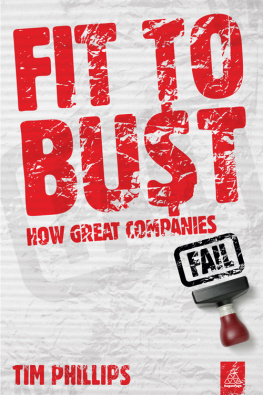Macroeconomics and the Phillips Curve Myth
James Forder
(p.iii) Macroeconomics and the Phillips Curve Myth
Oxford Studies in the History of Economics
Series Editor: Steven G. MedemaThis series publishes leading-edge scholarship by historians of economics and social science, drawing upon approaches from intellectual history, the history of ideas, and the history of the natural and social sciences. It embraces the history of economic thinking from ancient times to the present, the evolution of the discipline itself, the relationship of economics to other fields of inquiry, and the diffusion of economic ideas within the discipline and to the policy realm and broader publics. This enlarged scope affords the possibility of looking anew at the intellectual, social, and professional forces that have surrounded and conditioned economics continued development.

(p.iv) 
- Great Clarendon Street, Oxford, OX2 6DP,
- United Kingdom
- Oxford University Press is a department of the University of Oxford.
- It furthers the Universitys objective of excellence in research, scholarship,
- and education by publishing worldwide. Oxford is a registered trade mark of
- Oxford University Press in the UK and in certain other countries
- The moral rights of the author have been asserted
- First Edition published in 2014
- All rights reserved. No part of this publication may be reproduced, stored in
- a retrieval system, or transmitted, in any form or by any means, without the
- prior permission in writing of Oxford University Press, or as expressly permitted
- by law, by licence or under terms agreed with the appropriate reprographics
- rights organization. Enquiries concerning reproduction outside the scope of the
- above should be sent to the Rights Department, Oxford University Press, at the
- address above
- You must not circulate this work in any other form
- and you must impose this same condition on any acquirer
- Published in the United States of America by Oxford University Press
- 198 Madison Avenue, New York, NY 10016, United States of America
- British Library Cataloguing in Publication Data
- Data available
- Library of Congress Control Number: 2014939136
- Printed and bound by
- CPI Group (UK) Ltd, Croydon, CR0 4YY
- Links to third party websites are provided by Oxford in good faith and
- for information only. Oxford disclaims any responsibility for the materials
- contained in any third party website referenced in this work.
(p.v) Acknowledgements
First, I must thank Irene Lemos, who, as well as reading some of the drafts, has been following the progress of the work with what is politely called interest. She would be entitled to feel the Phillips curve has been wrapped around her neck much too long, but it would all have taken much longer without her encouragement.
Vivienne Brown, Peter Oppenheimer, Terry Peach, and Mary Robertson made valuable comments on all or much of the text. Several parts of the work were presented at conferences. I can hardly record everyone who commented over a number of years, but John Aldrich, Roger Backhouse, Richard van den Berg, Mauro Boianovsky, Tony Brewer, Hugh Goodacre, Geoffrey Harcourt, Peter Kriesler, Steven Medema, Renee Predergast, John Vint, and Michel de Vroey all made contributions which in one way or another stuck in my mind. The same is true of David Laidler, Richard Lipsey, and John Nevile in correspondence, and Wilfred Beckerman, William Coleman, Andrew Graham, John King, and Terry OShaughnessy in conversation. Bob Solow and David Vines commented on a version of Chapter
(p.ix) Note to the Reader
The following are identified by their last name only: Stephen Bailey, James Ball, Daniel Bell, John M. Clark, William Dickens, Irving Fisher, Crauford Goodwin, Robert J. Gordon, Robert E. Hall, Alvin Hansen, A. G. Hart, David Hume, Terence Hutchinson, John Kenneth Galbraith, Christopher Gilbert, Neil Jacoby, Harry Johnson, Robert G. King, H. Gregg Lewis, Daniel Mitchell, Arnold Packer, A. W. H. Phillips, Joan Robinson, Arthur Ross, Tibor Scitovsky, David C. Smith, Jim Taylor, H. A. Turner, Richard Wagner. Others sharing those last names are further identified when necessary.
At no point have I felt it helpful to change the emphasis in quotations, so any emphasis is the quoted authors own.
Where I have quoted from reprints, the original dates of publication and the quoted edition are indicated in, for example, the form
Introduction
There is one story about the history of macroeconomics that seems to be known to everyone who has studied the subject for more than a few weeks. It puts varying interpretations of the Phillips curve at the heart of the development of policy-orientated thinking from the 1960s to the 1980s, and its motif is the idea that economists of that period initially failed to appreciate the importance of expectations of inflation. Details of this story vary but the central points are these. In what quickly became a classic paper, revolutionized thinking by pointing out that continuous inflation would change expectations and thereby shift the Phillips curve so that there was no long-run tradeoff; and although this was initially disputed, in due course it was accepted.
One point I hope to make in what follows is that each component of that story is false. They should all simply be dismissed, and that should be the end of it. That, however, is a minor point. The more important point is that the orientation of this storyits general implication, trend, or tendencyis wholly misleading as well. The story offers a picture of an economics profession that was still, well into the post-war period, struggling to articulate the simplest ideas, and disputing the obvious even when it was stated. It describes an interlude in which either economics was bizarrely primitive or (p.2) its practitioners were extraordinarily slow-witted. That picture needs not just to be dismissed, but also replaced. Supposing that I can achieve those things, there will obviously be a further question as to how this story ever came to be told, believed, and become conventional, and responding to that issue is therefore a third objective. Indeed, it could reasonably be said that offering some account of the emergence of the story is almost a condition of making a persuasive case that it is only a myth.
Although I cannot, in advance of all the arguments, explain the acceptance of the storyeven dating its appearance precisely takes some effortI can perhaps say that the best-known early statement of it is found in , but a reprise of Friedmans story is in order here. He stated it as an objective to show that, despite widespread scepticism, it was appropriate for there to be a Prize for economics because, like the sciences, economics progresses by hypothesis formation, testing and rejection, and the formation of further hypotheses. He then took the story of the Phillips curve as his example and said that up to that time professional opinion had been through two stages of which the first was one of,












